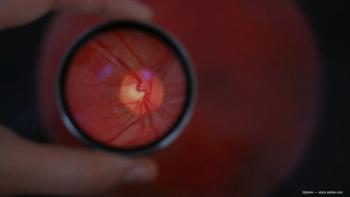
AAO 2025: Glaucoma laser surgery with Joel S. Schuman, MD, FACS
Innovations in selective laser trabeculoplasty and laser cyclophotocoagulation focus on procedural efficiency, patient comfort, and evolving first-line treatment strategies.
Joel S. Schuman, MD, FACS, of Wills Eye Hospital, presented an update on laser therapies for glaucoma, emphasizing recent innovations in selective laser trabeculoplasty (SLT) and laser cyclophotocoagulation at the American Academy of Ophthalmology 2025 annual meeting, October 18 to 20, in Orlando, FL. He began by contextualizing the range of laser treatments currently in use: “There are the traditional things that we've been doing: laser iridectomy, laser trabeculoplasty, laser cyclophotocoagulation.” Schuman indicated that while all these approaches remain relevant, laser trabeculoplasty is experiencing the most innovation.1
Historically, SLT required the use of a gonio lens to visualize the trabecular meshwork and direct laser energy precisely. Schuman described this procedure: “You need to have a lens sitting on the eye called a gonio lens that allows the person who's treating to actually see the drainage tissue of the eye, the trabecular meshwork, and target that with the laser.”
However, newer technologies are simplifying this process. Direct selective laser trabeculoplasty (DSLT) represents a significant advance: “With the newer device which is called direct selective laser trabeculoplasty or DSLT, there is no lens on the eye, and the device captures the eye, fixes on it, and then it treats 360° automatically without anything touching the eye except for light.” Although DSLT may result in “a little more irritation postop, a little less pressure lowering” compared with traditional SLT, its non-contact approach is a meaningful improvement in patient comfort and procedural efficiency.
He noted that SLT is increasingly recognized as an effective first-line therapy for open-angle glaucoma, often preferred over medications. He cited multiple studies, noting that “most recently the LiGHT trial…showed the efficacy and safety of selective laser trabeculoplasty.” In his clinical practice, he uses SLT as a primary intervention for most open-angle glaucoma patients: “For most types of open-angle glaucoma, SLT is the first option that I go to.”
He acknowledged patient preferences, explaining that some are hesitant to receive laser first-line therapy, in which case drops remain appropriate: “Those patients get treated with drops, which has been our first line treatment for over 100 years, but the data show and my clinical experience is that SLT is a better first line option.”
Schuman also highlighted important contraindications. SLT is generally unsuitable for inflammatory glaucomas, angle-closure glaucoma, and neovascular glaucoma, for which alternative therapies such as medications or incisional surgery are preferred. "Those sorts of glaucomas you're better choosing a different type of treatment," he said.
He emphasized the importance of accurate diagnosis, noting that misclassification can lead to ineffective or harmful interventions. For instance, angle-closure glaucoma misdiagnosed as open-angle glaucoma may result in inappropriate SLT, which “may actually make things worse,” while some patients might receive unnecessary laser iridectomy. Schuman noted, “It's important to do a good clinical examination and make your decision about what your choice of therapy is based on the patient's actual problem.”
REFERENCE
Schuman JS. Glaucoma laser therapy: Innovations and advice from the experts. Presented at: American Academy of Ophthalmology 2025 annual meeting; October 18-20, 2025; Orlando, FL. Session LEC133.
Newsletter
Don’t miss out—get Ophthalmology Times updates on the latest clinical advancements and expert interviews, straight to your inbox.








































